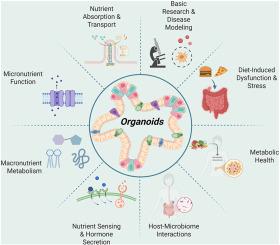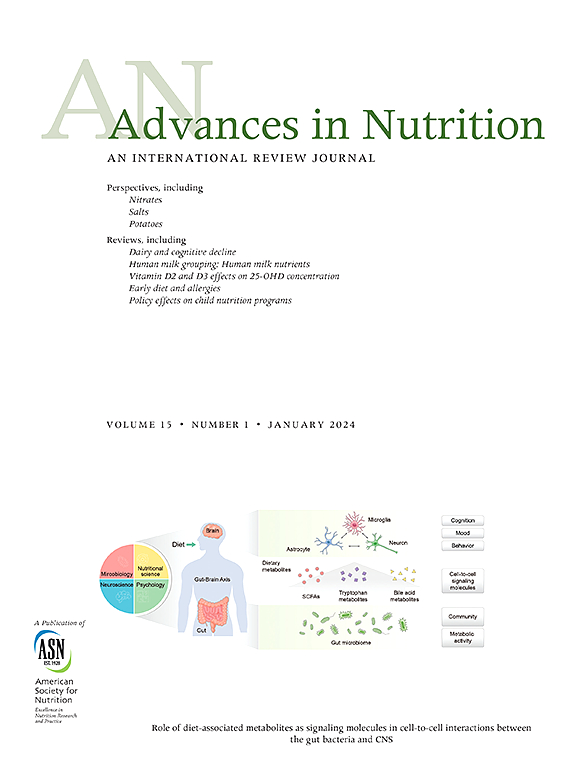The Use of Organoid Cultures in Advancing Nutrition Research
IF 9.2
1区 医学
Q1 NUTRITION & DIETETICS
引用次数: 0
Abstract
The importance of food and nutrients in human health and chronic disease progression has been appreciated for centuries. Crucial developments enabling understanding of the complex interactions between dietary patterns and health were made in the 20th century, owing in part to improvements in in vitro cell culture methods. Such 2-dimensional (2D) cell lines remain extensively used to study the molecular mechanisms through which nutrients regulate cellular homeostasis. Nevertheless, they do not recapitulate the in vivo environment and the complexity associated with tissues and organs, which invariably contain multiple cell types. Thus, findings from 2D cell cultures may not be directly applicable or representative of the in vivo situation. By contrast, organoids are 3D tissue structures capable of mimicking structural, functional, and multicellular features of an intact organ, and are becoming increasingly used to carry out in-depth cell and molecular level studies. In particular, the use of intestinal organoids in food and nutrition research has expanded in recent years due to the greater suitability of organoids relative to 2D cultures for investigating nutrient uptake, transport, metabolism, and host-microbiome interactions. In the present review, we summarize the emerging role and contributions of organoids, with emphasis on intestinal organoids, in nutrition research and intestinal health. We further highlight current limitations of organoid cultures and discuss potential future strategies to improve the use of organoids as a preferred model for investigations in the nutritional sciences.

类器官培养在促进营养研究中的应用。
几个世纪以来,人们一直认识到食物和营养素对人类健康和慢性疾病进展的重要性。由于体外细胞培养方法的改进,20世纪取得了重大进展,使人们能够了解饮食模式与健康之间的复杂相互作用。这种二维(2D)细胞系仍然广泛用于研究营养物质调节细胞稳态的分子机制。然而,它们并不能概括体内环境,以及与组织和器官相关的复杂性,这些组织和器官总是包含多种细胞类型。因此,2D细胞培养的结果可能不直接适用或不代表体内情况。相比之下,类器官是三维(3D)组织结构,能够模仿完整器官的结构、功能和多细胞特征,并且越来越多地用于进行深入的细胞和分子水平研究。特别是,近年来,肠道类器官在食品和营养研究中的应用正在扩大,因为类器官相对于二维培养物更适合研究营养摄取、运输、代谢和宿主-微生物组相互作用。本文综述了类器官在营养研究和肠道健康中的作用和贡献,重点介绍了肠道类器官。我们进一步强调了目前类器官培养的局限性,并讨论了潜在的未来策略,以改善类器官作为营养科学研究的首选模型的使用。
本文章由计算机程序翻译,如有差异,请以英文原文为准。
求助全文
约1分钟内获得全文
求助全文
来源期刊

Advances in Nutrition
医学-营养学
CiteScore
17.40
自引率
2.20%
发文量
117
审稿时长
56 days
期刊介绍:
Advances in Nutrition (AN/Adv Nutr) publishes focused reviews on pivotal findings and recent research across all domains relevant to nutritional scientists and biomedical researchers. This encompasses nutrition-related research spanning biochemical, molecular, and genetic studies using experimental animal models, domestic animals, and human subjects. The journal also emphasizes clinical nutrition, epidemiology and public health, and nutrition education. Review articles concentrate on recent progress rather than broad historical developments.
In addition to review articles, AN includes Perspectives, Letters to the Editor, and supplements. Supplement proposals require pre-approval by the editor before submission. The journal features reports and position papers from the American Society for Nutrition, summaries of major government and foundation reports, and Nutrient Information briefs providing crucial details about dietary requirements, food sources, deficiencies, and other essential nutrient information. All submissions with scientific content undergo peer review by the Editors or their designees prior to acceptance for publication.
 求助内容:
求助内容: 应助结果提醒方式:
应助结果提醒方式:


